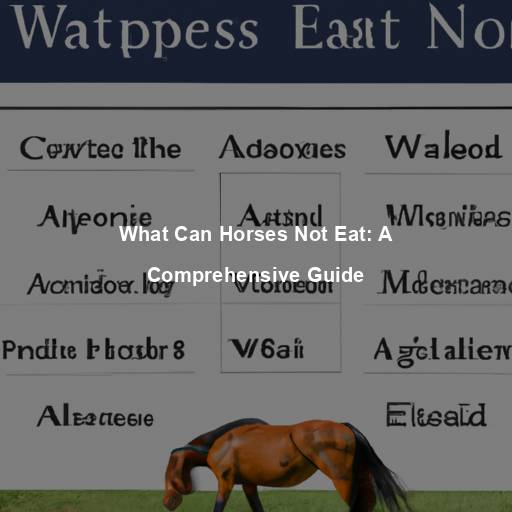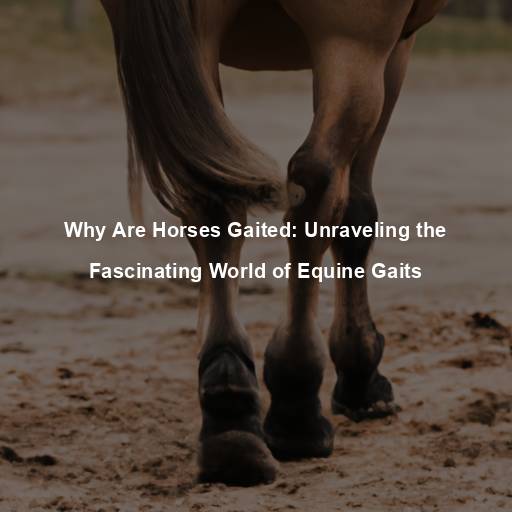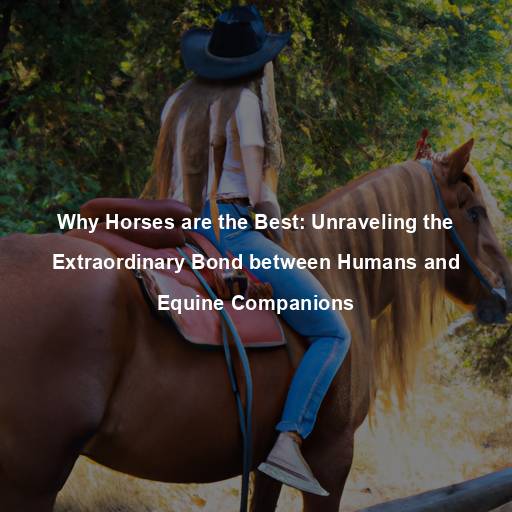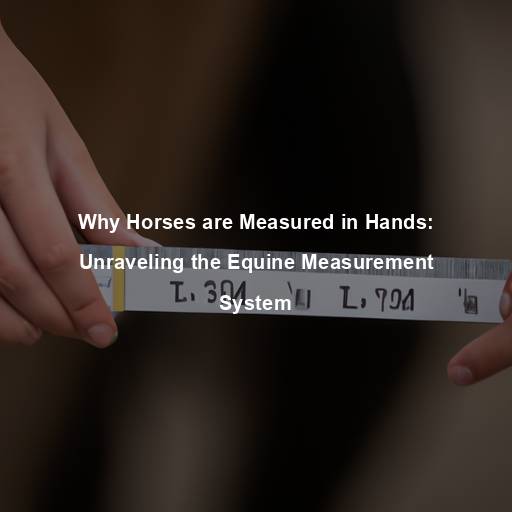How Do Horses Neigh: Unlocking the Mystery of Equine Communication
Last Updated on November 18, 2023 by Evan
Contents [hide]
- 1 The Fascinating World of Horse Sounds
- 1.1 The Melodious Neigh: A Horse’s Signature Call
- 1.2 The Anatomy of a Neigh: How Horses Produce Vocalizations
- 1.3 Decoding the Neigh: Understanding Horse Communication
- 1.4 Neighing in the Wild: The Evolutionary Significance
- 1.5 The Language of Equine Emotions: Interpreting Horse Sounds
- 1.6 The Bond Between Horse and Human: Communication Beyond Words
- 1.7 Unraveling the Neigh: A Journey of Discovery
- 1.8 The Melody of Equine Vocals
- 1.9 Acoustics of Equine Vocalizations
- 1.10 Frequencies in Horse Neighs
- 1.11 Interpreting Horse Vocalizations: The Role of Context and Body Language
- 2 The Cultural Significance of Horse Neighs: From Mythology to Modern Media
- 3 Equine Vocalizations: Beyond the Neigh
- 4 The Human-Horse Connection: Language Without Words
- 5 FAQs – How do horses neigh?
- 5.1 What is the purpose of horses neighing?
- 5.2 How do horses make the neighing sound?
- 5.3 Do only male horses neigh?
- 5.4 Can horses neigh in different tones or pitches?
- 5.5 Are there different types of neighs for different messages?
- 5.6 Can horses understand each other’s neighs?
- 5.7 Are there any health issues associated with excessive neighing?
- 5.8 Can humans imitate a horse’s neigh?
The Fascinating World of Horse Sounds
Horses, magnificent creatures that they are, have a unique way of expressing themselves. Among the various vocalizations they make, the most iconic and recognizable is undoubtedly the neigh. But have you ever wondered how horses produce this distinct sound? What purpose does it serve in their communication repertoire?
The Melodious Neigh: A Horse’s Signature Call
The neigh, or whinny, is a vocalization that holds great significance in the equine world. It is a high-pitched sound that resonates through the air, capturing the attention of both horses and humans alike. Horses use this signature call to communicate a range of emotions, including excitement, fear, and anticipation. It serves as a way for them to establish contact with other horses, express their presence, and relay important messages.
The Anatomy of a Neigh: How Horses Produce Vocalizations
Delving into the enigmatic realm of equine vocals, one is compelled to embark upon an intriguing exploration of the intricacies that compose their melodious neighs. Beneath the surface of equine anatomy lies a captivating realm, where the remarkable larynx, an illustrious voice box, orchestrates the symphony of equine communication. Nestled within the expanses of their majestic throats, the revered vocal folds, known as vocal cords, act as the ingenious architects of equine harmony. Within this tapestry of enigmatic melodies, horses unfurl a burst of perplexing auditory prowess that astounds the human ear.
Have you ever wondered about the captivating symphony of a horse’s neigh? It’s a mesmerizing blend of air, vibrating vocal folds, and mystical resonating chambers hidden within their majestic heads. Each neigh carries a unique timbre, a burst of pitch and intensity that reveals the horse’s age, size, and individuality. It’s a perplexing marvel of equine communication that leaves us in awe of nature’s intricate secrets.
Decoding the Neigh: Understanding Horse Communication
In the mysterious realm of equine communication, horses utilize a tapestry of sounds to express their inner world, with the iconic neigh serving as a mere fraction of the enigmatic puzzle. Often linked with fervor and the pursuit of attention, this exclamation can also serve as an alarming beacon, signaling unease and caution. By immersing ourselves in the intricate tapestry of their world, decoding the subtle cues of their body language, we unravel the secrets hidden within, offering a glimpse into the enigmatic realm of equine consciousness.
In addition to neighs, horses communicate through various other sounds, including snorts, squeals, and nickers. Each of these vocalizations serves a specific purpose and carries its own meaning within the equine social framework. By deciphering these sounds, horse enthusiasts and caretakers can better understand their equine companions and foster stronger bonds based on effective communication.
Neighing in the Wild: The Evolutionary Significance
Understanding the profound meaning behind the mesmerizing sound of horse neighs requires delving into their deep-rooted evolutionary origins. In their untamed habitat, horses thrive as intricate social beings, fostering a multifaceted social framework within their herds. The enigmatic power of neighing emerges as a vital tool for maintaining the delicate fabric of their social bonds, enabling flawless coordination, and resounding their identity within the group. Embodied in these melodious vocalizations lies the key to unlocking the complexity of equine communication.
In the context of survival, neighing also serves as an alarm system. Horses can alert the herd to potential threats, such as predators or unfamiliar stimuli, by emitting specific vocalizations. This collective communication allows the group to stay vigilant and ensure the safety of all its members.
The Language of Equine Emotions: Interpreting Horse Sounds
Horses, with their noble presence and majestic aura, may not converse in the language we humans are accustomed to, but their communication system is far from simple. It is a complex tapestry of nonverbal expressions that holds the key to unlocking their enigmatic world. For those who have the privilege of engaging with these magnificent creatures, deciphering their body language, noticing subtle facial expressions, and even decoding their melodic vocalizations offers a truly profound understanding of their innermost emotions. It is through this immersive language of non-verbal cues that we delve into the captivating enigma of the equine realm.
There is something enchanting about the way a horse expresses itself through its distinctive neigh. Whether it is a cheerful melody resonating through the pasture, or a disconcerting cry cutting through the silence, every neigh carries a secret message. To grasp the profound meaning behind these equine vocals, we must immerse ourselves in their world, decoding the symphony of emotions they unveil – from giddy delight to unnerving anguish. By embracing this enigmatic language, we can unlock the key to attending to our noble companions in a way that is truly empathetic and responsive.
The Bond Between Horse and Human: Communication Beyond Words
The timeless bond between horses and humans transcends language barriers. Through patient observation and attentive listening, we can establish a profound connection with these magnificent animals. By learning their unique vocalizations, including the enchanting neigh, we open a door to their world, forging a partnership built on trust, understanding, and mutual respect.
As horse enthusiasts, it is our responsibility to cultivate effective communication with our equine companions. By honing our skills in interpreting their vocalizations, we can strengthen our relationship and create a harmonious environment where both horse and human thrive.
Unraveling the Neigh: A Journey of Discovery
For centuries, the enchanting sound of the neigh has continued to mesmerize those who have a soft spot for horses. Whether they roam freely across vast plains or reside in cozy stables, these majestic creatures have utilized their melodious vocalization to forge connections and convey their emotions. By delving into the intricate mechanics of the neigh, its evolutionary importance, and the profound emotional impact it has on both horses and their human counterparts, we can truly comprehend the captivating language shared between these extraordinary beings.
When was the last time you truly listened to the captivating symphony of a horse’s neigh? It’s remarkable how the simple sound holds a profound depth that transcends our understanding. Hidden within those harmonious vibrations lie a language beyond words, an emotional spectrum waiting to be explored. In this captivating journey, let us delve into the enigmatic world of equine acoustics and frequencies, where science and wonder intertwine with perplexing allure.
The Melody of Equine Vocals
While the neigh is the most well-known vocalization of horses, these majestic creatures possess a diverse range of sounds in their repertoire. From gentle nickers to powerful roars, each vocalization serves a distinct purpose. To fully appreciate the complexity of horse communication, we must delve into the science behind their vocalizations.
Acoustics of Equine Vocalizations
Equine vocalizations are shaped by the complex interplay between their anatomy and the surrounding environment. The unique structure of a horse’s vocal apparatus, including the size and shape of their larynx, throat, and nasal passages, influences the quality and resonance of their vocalizations. These anatomical variations contribute to the distinctive sound of each horse’s voice.
Additionally, the environment plays a crucial role in the transmission and perception of horse vocalizations. Factors such as distance, background noise, and atmospheric conditions can affect the clarity and range of sound. Understanding these acoustics is essential for accurately interpreting horse vocalizations and discerning their intended messages.
Frequencies in Horse Neighs
The pitch or frequency of a sound refers to the number of vibrations per second and is measured in hertz (Hz). Different horse vocalizations exhibit a wide range of frequencies, each carrying its own significance. For instance, a high-pitched neigh may indicate excitement or alertness, while a lower-pitched nicker may express contentment or a soothing call.
Research suggests that horses are capable of producing and perceiving a broad spectrum of frequencies. Their sensitive ears can detect sounds ranging from approximately 14 Hz to 25,000 Hz, far surpassing the auditory range of humans. This ability allows horses to communicate using subtle variations in pitch, enabling a nuanced and intricate language of their own.
Interpreting Horse Vocalizations: The Role of Context and Body Language
While understanding the acoustic properties of horse vocalizations is essential, it is equally important to consider the context and accompanying body language when deciphering their messages. Horses communicate holistically, combining vocalizations with visual cues, postures, and facial expressions to convey their intentions and emotions.
When it comes to understanding horse vocalizations, there’s a whole symphony of signals to decipher. Take, for instance, the majestic neigh. It’s not just a simple sound, but a complex composition of raised ears, an alert stance, and a piercing gaze. These elements can hint at a horse’s excitement, anticipation, or perhaps even a touch of mystery.
The Cultural Significance of Horse Neighs: From Mythology to Modern Media
Horses in Mythology and Folklore
From ancient times to the present day, the captivating world of horses and their mesmerizing vocal expressions has captivated the hearts and minds of humanity. Embedded in mythology and folklore, these majestic creatures have been bestowed with an almost mystical aura, endowed with extraordinary powers beyond mortal comprehension. The resounding echoes of their impassioned neighs have been perceived as ethereal messengers, weaving a celestial tapestry of divine communication and auspicious signs that guide our destinies.
In Greek mythology, the winged horse Pegasus was said to neigh thunderously, symbolizing power and majesty. Norse mythology featured the eight-legged horse Sleipnir, whose neighs were said to shake the earth. These mythical stories reflect the deep reverence and awe that humans have long held for these magnificent animals and their vocalizations.
Horse Neighs in Art and Literature
The allure of horse vocalizations has also inspired countless artists and writers throughout the ages. Paintings, sculptures, and literary works often depict horses in motion, accompanied by the imagined melodies of their neighs. These artistic interpretations capture the essence of the horse-human connection and evoke a sense of beauty, freedom, and adventure.
Throughout the rich tapestry of literature, there exists a captivating trend – the resounding reverberations of horse neighs. These majestic vocalizations, seeped in symbolism, seize our imaginations, evoking notions of liberty, resilience, and the unbridled essence of the natural world. From the pages of Anna Sewell’s revered Black Beauty to the epic soundscapes of J.R.R. Tolkien’s Middle-earth, these distinctive cries echo, leaving an indelible mark that speaks to the profound connection shared between humans and these magnificent creatures.
Horse Neighs in Film and Media
In the mesmerizing realm of cinema, the enchanting realm of horse vocalizations has taken center stage. Whether it’s the grandeur of a sweeping historical epic or the tender bonds of friendship, equine-centered films have skillfully woven the tapestry of equine voices into their narratives. The thunderous neighs that echo through the battlegrounds and the tender whinnies exchanged between kindred spirits create a symphony of emotions, rendering the stories richer and more captivating.
In today’s ever-evolving media landscape, the ethereal harmony of horse neighs has transcended mere auditory sensations and etched itself into the annals of pop culture. From the exhilarating echo of a gallant protagonist’s trusty companion to the captivating cry of an untamed equine spirit, these melodic interludes have woven themselves seamlessly into our shared consciousness. Their enchanting presence not only adds a new dimension to our visual indulgences but also stirs within us a magnetic allure of exploration, a wistful longing for the past, and a profound appreciation for the profound connection between man and beast.
Equine Vocalizations: Beyond the Neigh
Nickers: Expressions of Connection and Contentment
When we think of horses, the resounding neighs may capture our attention, but we mustn’t forget the profound value of their other vocalizations, like the enigmatic nickers. These gentle, soothing sounds, uttered in a low pitch, serve as a means for horses to convey their emotional bonds, inner tranquility, and utter bliss. Often employed as warm greetings between equine companions or as a comforting call from a mare to her precious foal, nickers hold a mystical charm that beckons our fascination.
Nickers can also serve as expressions of trust and companionship between horses and humans. When a horse nickers in response to their human caretaker’s presence or voice, it signifies a bond built on mutual understanding and affection. These gentle vocalizations create a sense of warmth and reassurance, fostering a harmonious relationship between horse and human.
Snorts: Signals of Warning and Alertness
In contrast to the softness of nickers, snorts are sharp, forceful exhalations accompanied by a distinctive blowing sound. Horses use snorts to communicate a range of messages, primarily related to their sense of alertness or potential danger in their surroundings. Snorts serve as a warning signal, indicating a heightened state of awareness and readiness to respond.
When the majestic horse senses danger lurking or something out of the ordinary catches its attention, a symphony of snorts reverberates through the air, a primal and instinctive way of communicating with fellow equines nearby. In this carefully choreographed performance, these vocalizations are interlaced with high-held heads, dilated eyes, and rigid stances, painting a vivid picture of heightened alertness. For those entrusted with the care of these magnificent creatures, mastering the art of interpreting these signals becomes paramount – a dance of comprehension that safeguards the precious bond between human and horse alike.
The Human-Horse Connection: Language Without Words
Trust and Mutual Understanding
The incomparable connection shared between humans and horses surpasses mere verbal communication. Horses possess an inherent intuition to grasp and reciprocate human emotions, transforming them into extraordinary companions and therapeutic aids. By engaging in patient and empathetic interactions, individuals can cultivate a profound comprehension of their equine counterparts, forging an inexplicable bond that surpasses the limitations of language.
There exists a profound connection between humankind and horses, one that transcends the boundaries of spoken language. By actively engaging in the art of decoding their vocalizations and deciphering the intricate nuances of their physical demeanor, we are invited into a world of trust and understanding. It is through this eloquent language of nonverbal communication that the seeds of a harmonious partnership are sown, fostering a bond built upon empathy, respect, and shared encounters that evoke a sense of wonder and intrigue.
A Journey of Discovery
The world of horse vocalizations is a fascinating realm, filled with complexity, emotion, and intrigue. By exploring the science behind horse vocalizations, appreciating their cultural significance, and understanding the various vocal expressions beyond the neigh, we embark on a journey of discovery and connection.
Whenever you happen to encounter the majestic presence of a horse, I implore you to indulge in a moment of introspection and be attuned to their secret symphony. Embark on a journey where their calls become a tapestry of captivating tales, interwoven with intricate emotions and meanings. Through this enigmatic language of the soul, lies the unraveling of the profound connection that surpasses linguistic barriers, where the true essence of the human-horse kinship blossoms—a timeless alliance formed on the bedrock of trust, empathy, and the enchantment of unspoken dialogue.
FAQs – How do horses neigh?
What is the purpose of horses neighing?
Horses neigh, also known as whinnying, to communicate with each other. It serves as a vocalization for various reasons, including expressing their emotions, signaling their presence, establishing dominance, and seeking attention or companionship.
How do horses make the neighing sound?
Have you ever wondered how horses make that iconic sound – the neigh? It’s a fascinating process that involves the perfect coordination of their vocal cords, larynx, nostrils, lips, and teeth. When horses exhale forcefully, their vocal cords constrict, creating vibrations that give rise to the captivating neigh we all know. But that’s not all – they also use their nostrils, lips, and teeth to add unique variations and make their neigh truly one of a kind. The complexity behind this seemingly simple sound is truly mesmerizing!
Do only male horses neigh?
It’s a bit of a surprising revelation, but the truth is that neighing is not exclusive to male horses. Our equine friends, regardless of gender, have the remarkable ability to make those recognizable neighing sounds. Yet, there’s no denying that stallions, in particular, take the reins when it comes to neighing, particularly during the breeding season, using it as a powerful tool to both entice potential partners and establish their dominance. So, rest assured, it’s not just the stallions who can let out a powerful and spirited neigh!
Can horses neigh in different tones or pitches?
Did you know that horses possess an intriguing ability to produce an assortment of captivating neighing sounds that captivate our curiosity? With their remarkable vocal range, these majestic creatures can effortlessly generate an array of neighs that vary in tone, pitch, and length, leaving us in awe of their diverse communication skills. From high-pitched calls to low-toned melodies, each horse unveils its own distinctive and identifiable neigh, further enhancing the allure and mystique that surrounds these magnificent animals. Join us as we delve into the perplexing world of equine vocalizations and unravel the enigmatic language of the neigh.
Are there different types of neighs for different messages?
Did you know that horses have their own unique language of neighs? It’s fascinating how they use different types of sounds to convey specific messages. For example, a mare has a tender and caring neigh that she uses to communicate with her foal, while a stallion has a powerful and assertive neigh to establish dominance and warn other horses. These majestic creatures also have different patterns and tones in their neighs to express emotions like excitement, fear, or anxiety. It’s truly awe-inspiring to witness the complexity and intricacy of their communication skills.
Can horses understand each other’s neighs?
The world of horses is a fascinating mix of mystique and intrigue. These majestic creatures possess an uncanny ability to navigate the intricate labyrinth of equine communication. Utilizing their finely tuned auditory senses, horses are able to decipher the multifaceted messages hidden within their neighs. From tone to duration, these equine linguists unravel the true meaning behind the sounds, while also decoding the subtle body language that accompanies each vocalization. Through these remarkable skills, horses not only connect with each other on a profound level but also harness the power to assess situations, identify individuals, and respond with utmost precision. Truly, these four-legged enigmas have mastered the art of inter-equine dialogue, leaving us in awe of their complex and captivating realm.
Are there any health issues associated with excessive neighing?
There’s something about the way horses neigh that captivates our attention. While a horse’s healthy neighing may add rhythm and charm to any equestrian experience, it’s important to listen closely when the melody becomes excessive or lingers for too long. Behind this intriguing symphony lies a world of possible explanations, ranging from physical discomfort to emotional unease. So, next time your hoofed companion is belting out a symphony of neighs, be sure to keep your ear to the ground, as it could be a sign of something more than just a simple melody.
Can humans imitate a horse’s neigh?
It’s fascinating how humans try to imitate the majestic neigh of a horse, although their success rate is rather hit or miss. While some folks might possess a natural knack for mimicking animal sounds, capturing the precise essence of a horse’s neigh can be quite the perplexing task. Nevertheless, don’t lose hope! Through dedication, attentive listening, and a thorough grasp of the various components that makeup a neigh (from pitch to rhythm to vocal nuances), humans can summon a semblance that will leave you in awe.







